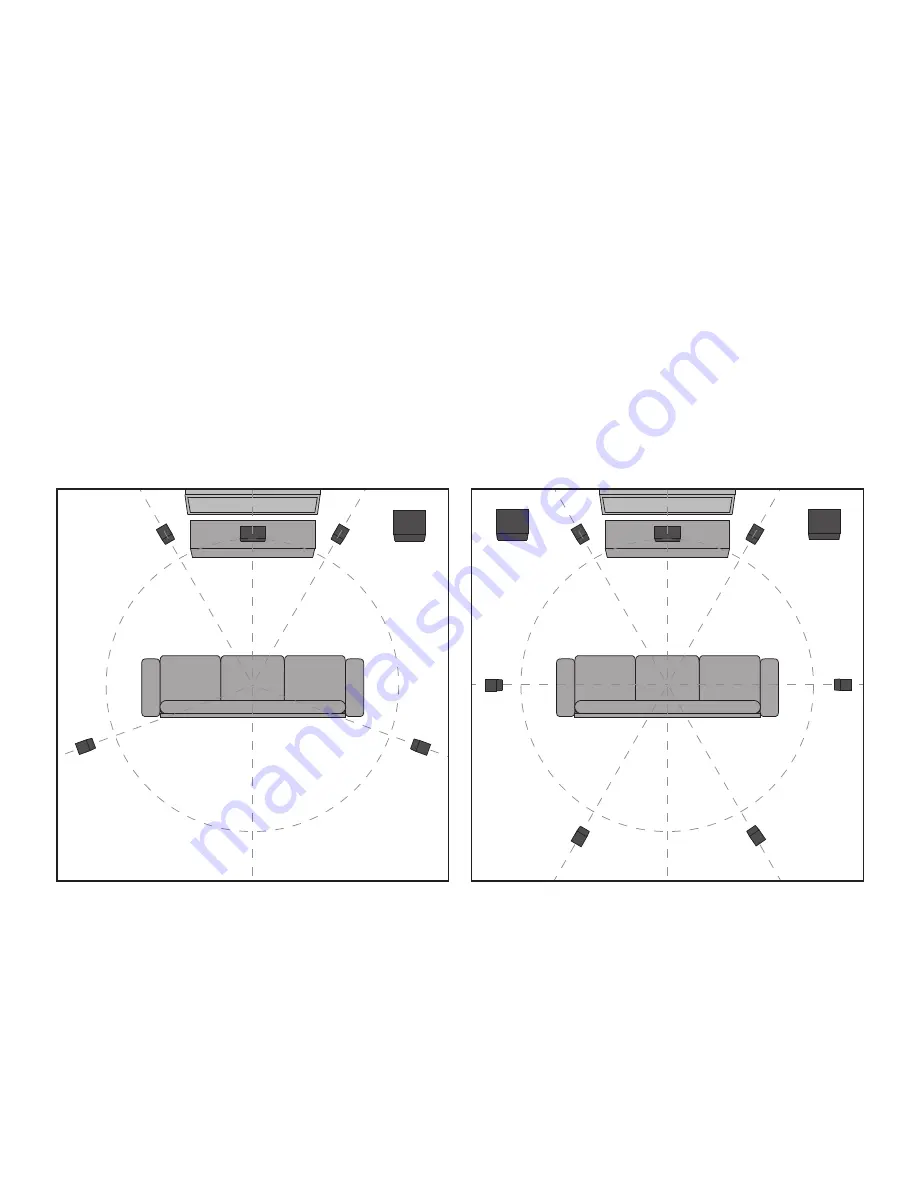
Begin and end listening sessions at low volume levels so you will not power up your system the next time with possibly harmful high voltages. A
damaging surge also could result if you change the input source (from FM tuner to CD player, for example) at high volume levels.
If you suspect that one channel of your amplifier has failed, have it repaired immediately by your dealer. Damage to your speakers could occur if you
switch between the good and defective channels.
TWO-CHANNEL (STEREO) SPEAKERS
Phase Technology audiophile speakers for stereo applications can be affected by listening room geometry, furnishings and fixtures. Experimentation
with placing your new speakers in your unique listening environment will dictate how you arrive at the final answer.
We recommend starting the positioning process by selecting a favorite recording to use as the reference source. Place your new stereo speakers
1-3 feet away from rear and side walls and 6-8 feet apart. With bookshelf models, the tweeters (small, high-frequency drivers) should be positioned
at about ear level when you’re seated in your favorite listening position.
In most rectangular rooms, the speakers will sound best when placed along the short wall; but again, experimentation will provide the best answer.
Move the speakers around slightly to determine any changes in sound balance and stereo imaging. Even try angling the speakers slightly toward
your listening area. You may be surprised by the differences you will hear with even the slightest adjustments.
HOME THEATER SYSTEMS SPEAKER PLACEMENT
Today’s digital multi-channel home theater technology has elevated the art of “surround sound” to reproduce the movie theater experience in your
own home. Speaker requirements and placement are vitally important in reproducing these multi-media effects.
Two front speakers (left and right), two surround speakers (left and right), a center-channel speaker, and a subwoofer define the minimum
arrangement for modern multi-channel systems. Placement of speakers in your room will impact the final listening experience. To position your
speakers, there are some general guidelines that take room size, shape, and fixtures and furnishings into account. Use the following illustrations as
a general guide for speaker placement in a typical home theater system.
LF
RF
LS
RS
SUB
C
LF
RF
LS
RS
LR
RR
SUB
C
SUB
5.1 HOME THEATER SYSTEM
In a 5.1 home theater system, the center channel (C) should be placed at
0º directly below or above the video screen, the left front (LF) and right front
(RF) speakers should be placed at 30º from the listening area, and the left
and right surrounds (LS and RS) should be placed at 110º. All five speakers
should be placed at or near ear level.
7.2 HOME THEATER SYSTEM
In a 7.2 home theater system, the center channel (C) should be placed at 0º
directly below or above the video screen, the left front (LF) and right front (RF)
speakers should be placed at 30º from the listening area, and the left and
right surrounds (LS and RS) should be placed at 90º. The left rear (LR) and
right rear (RR) speakers should be placed at 150º. All seven speakers should
be placed at or near ear level.
Front speakers should be placed 6-8 feet apart (or on the sides or your screen if your screen is wider) to fully separate the left and right channels.
Whether placed on speaker stands or on shelves, your speakers should be at or slightly above ear level.
Rear surround speakers also should be placed at or slightly above your listening position for the best reproduction of surround-sound effects.
Ideally, they should be facing into your favorite listening position from either side of the room
Center speaker placement should be, if possible, directly on top of or under your TV monitor or projection TV screen. Center speakers should
be placed in a horizontal orientation, directly below (or above) the center of your video screen. This correctly positions the critical sound track
information (usually dialogue) that filmmakers direct to the center channel.




